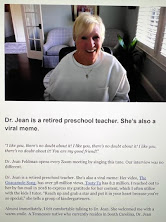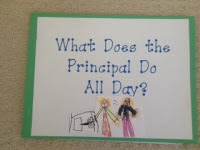And here’s a terrific magic wand you can make with your students. Take wooden chopsticks or coffee stirrers and dip one end in glue. Roll in glitter, dry, and ABRACADABRA! Now, let’s see if we can do a little magic with the wands in your classroom.
Smart Wands
Children walk around the room and point to words, letters, shapes, etc. that they can recognize.
*Encourage them to use whisper voices and make complete sentences.
*Divide children into pairs and let one child point while the other child reads the word.
Trackers
Use wands to track print, identify parts of speech, find details in illustrations, and so forth.
Invisible Writing
Use wands to write letters, words, numerals, etc. in the air.
Story Starters
Prompt creativity by having children write stories about what they would do with a magic wand.
Teacher Magic
Close your eyes as you wave the wand and say, “Abracadabra! I wish that all my students would sit quietly and listen to me.” When they are all quiet you can open your eyes. Taa daa!
Hocus Pocus
Can your students help you come up with some other magic chants? On Sesame Street the Count said, "Allah peanut butter sandwiches." In Cinderella the phrase was, "Salagadoola mechicka boola bibbidi-bobbidi-boo."





















































